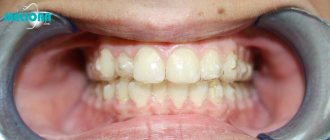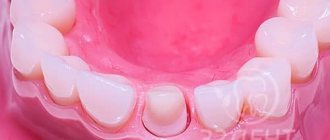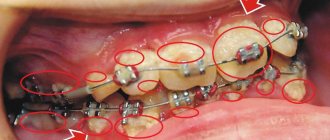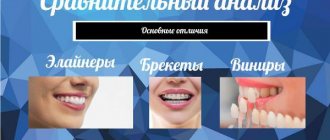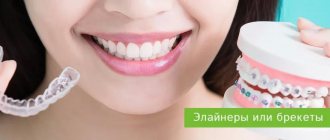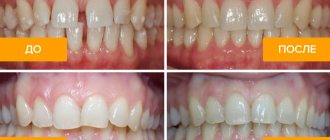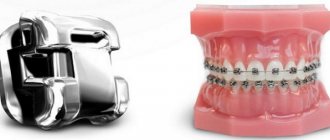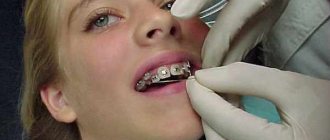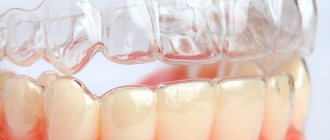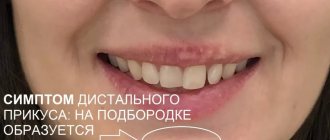Types of toothache that go to your head
Dental problems can have different manifestations. One of them is acute pain that radiates to the jaw, temporomandibular joint, temples, and can also cover the entire surface of the head. Diseases can occur due to inflammation of tissues, injuries and abnormalities in the structure of bones and joints, and damage to teeth. A common feature for them is a tendency to constant progression, so the diseases require timely treatment.
Caries
Caries is a disease with a slow but progressive course. It begins with damage to the enamel and continues with the destruction of the internal structures of the tooth. In the future, the disease can be complicated by inflammation of the pulp, as well as periodontitis. Doctors identify a number of reasons that can lead to the development of caries:
- the presence of hard plaque and stones on tooth enamel;
- insufficient oral hygiene, as a result of which microorganisms have a detrimental effect on the enamel;
- anatomical features, the presence of gaps and spaces between teeth;
- the concentration of fluoride in the enamel - the lack of this element increases the sensitivity of the teeth.
Tooth decay can damage the deep structures of the tooth, leading to nerve inflammation. This process is accompanied by acute, throbbing pain that can spread to the entire jaw and radiate to the head. Treatment consists of removing damaged tooth structures and installing a filling; if necessary, complete tooth extraction is performed. According to the decision of the doctor and the patient, implants are installed.
Cyst
A cyst is a pathological cavity surrounded by a capsule. It appears near the root of the tooth as a result of caries, as well as when an infection occurs during dental prosthetics or installation of crowns. Pathogenic microorganisms cause inflammation, which is controlled by the immune system. However, the tissues are destroyed, and a dense protective capsule is formed around them. The process can progress, which is dangerous due to the destruction of the jaw bones, rupture of the cyst and the entry of decay products into the bloodstream. It is important that the cyst may not show any symptoms in the early stages, but requires urgent removal immediately after its discovery.
Displacement of the jaw head
One of the reasons why dental problems are accompanied by headaches is dysfunction of the temporomandibular joint. It is paired and normally symmetrical, provides mobility to the lower jaw and connects it to the bones of the skull. He is constantly in motion and takes part in many processes: chewing, swallowing, speaking, yawning and others. The joint is formed by the fossa of the temporal bone and the head located on the lower jaw. Incorrect position of this particular element leads to dysfunction of the joint.
There are a number of reasons that can cause temporomandibular joint dysfunction:
- malocclusion;
- removal or loss of teeth;
- quick erasing of chewing surfaces;
- injuries, jaw fractures, pathologies during rehabilitation;
- high speech load.
Temporomandibular joint dysfunction can be diagnosed by characteristic signs: a clicking sound when opening the mouth, pain in the temples, difficulty moving the lower jaw. However, these diseases can also present with atypical symptoms, including headache, hearing and vision impairment, snoring and sleep apnea.
Other reasons
Headaches can be a manifestation of acute and chronic dental diseases. A more detailed examination reveals various abnormalities, including:
- inflammatory diseases of the teeth and oral cavity;
- incorrect installation of implants, errors in prosthetics;
- inflammation or mechanical compression of the dental nerve;
- malocclusion is often a congenital pathology that can be corrected in childhood;
- arthrosis, arthritis of the temporomandibular joint caused by various factors.
It is impossible to make an accurate diagnosis at home, so it is important to consult a specialist in time for examination. It is important to remember that some diseases are asymptomatic in the initial stages, and their manifestations may be atypical. Thus, toothache must be distinguished from migraines and other types of headaches.
Combined with nausea
Severe headache and nausea are signs of migraine, meningitis, and hypertensive crisis.
Often the cause of these symptoms is sinusitis, sinusitis, or intoxication of the body. Nausea, headache, and dizziness are also symptoms of traumatic brain injury and infectious diseases. Patients complain of headache, nausea, weakness at the initial stage of influenza and acute respiratory infection. In this case, the body temperature rises to high numbers. The development of a migraine can be signaled by ripples in the eyes, nausea and headache. With a migraine, the patient's appetite disappears, an aversion to strong odors appears, nausea, irritability, photophobia, and numbness in certain parts of the body occur.
Headache and dizziness also occur when wearing incorrectly selected glasses or lenses or disruption of the vascular system. Headaches and spots in the eyes appear due to fatigue and nervous exhaustion, during weather changes, after stress. These symptoms occur in people who have suffered a traumatic brain injury, spinal injury or disease.
Headache and flashing spots before the eyes appear during a hypertensive crisis. Its variety - hyperkinetic crisis - begins abruptly with headache, nausea, flickering of spots before the eyes and vomiting. The patient feels hot. His sweating and heart rate increase. Trembling is felt throughout the whole body. High blood pressure can cause hypertensive encephalopathy. It manifests itself with the following symptoms:
- Very severe headache;
- Dizziness;
- Nausea;
- Vomiting;
- The flickering of flies in the eyes.
The patient may lose consciousness and die if medical care is not provided in a timely manner.
Headaches that occur in the morning after sleep can be a manifestation of a brain tumor, abusive cephalalgia, tension pain, or migraine. Overuse headache occurs with long-term use of analgesics. It gets worse in the morning. The intensity of the pain constantly changes throughout the day. Overuse headaches are aggravated by stress, mental tension, excessive physical activity, and also by stopping a drug that relieves pain. Abuse cephalgia becomes permanent if the patient suffers from depressive syndrome, is often irritated, and is very tired. Due to constant headaches, a person’s concentration and performance decrease. He sleeps poorly and constantly feels tired.
Diagnostic and treatment methods
An accurate diagnosis is made by a dentist based on the results of the examination and additional examinations. You may need X-rays of the jaw, computed tomography, as well as orthopantomography - a common technique for visualizing the stage of carious lesions and assessing the condition of fillings and crowns. The following methods are used for treatment:
- correction of bite using orthodontic structures (plates, braces, mouth guards);
- surgery to remove tumors, damaged teeth and nerves, and to treat caries;
- prosthetics, installation of implants.
If the doctor prescribes surgical treatment, conservative methods and medications are ineffective. They will help temporarily reduce the pain, but then the disease will progress. It is important to remove the main focus of the disease, cleanse the pathological area of microorganisms, pus and other substances, and then pay attention to proper recovery. If necessary, the dentist may prescribe additional routine examinations some time after successful treatment.
Diagnostics
Determining the pathology that causes pain in the right side of the head is the responsibility of a neurologist. If necessary, the patient is referred for consultation to an otolaryngologist, rheumatologist, or oncologist. To identify focal symptoms, a neurological examination is performed. Diagnosis of primary cephalgia is based on compliance of the clinical picture of the disease with certain criteria. Additional techniques are used during differential diagnosis. For other pathologies, the list of procedures is determined taking into account the nature of the disease. May be assigned:
- Ultrasonography.
Duplex and Doppler sonography are informative in assessing the condition of blood vessels. In case of vertebrobasilar insufficiency, they are performed to study the cervical and intracranial vessels, determine the localization and extent of stenosis. In other cases, they are prescribed to exclude vascular diseases. - Tomography.
Patients with arachnoiditis and tumors are referred for MRI of the brain. If the vertebral artery is damaged, MR angiography is performed. Spinal diseases are diagnosed using CT or MRI of the cervical spine. - Otolaryngological examination.
Necessary for sinusitis, mastoiditis. Along with an external examination, anterior rhinoscopy, otoscopy, and diagnostic puncture of the accessory sinus can be performed. - Radiography.
Images of the cervical spine are recommended for disc herniation, osteochondrosis, and suspected compression of the vertebral artery by surrounding hard structures. X-rays of the temporal bone are indicated for mastoiditis, and of the paranasal sinuses for sinusitis.
Electroencephalography
Prevention of dental diseases
Proper prevention of dental diseases should be carried out from an early age. This will help avoid many problems that lead to constant pain, acute and chronic diseases, as well as tooth loss. Doctors recommend the following methods of prevention:
- daily oral hygiene using toothpaste and rinses;
- removing plaque in the dental office when it appears;
- timely correction of bite and incorrect position of teeth;
- regular dental check-ups.
At the Clinical Brain Institute, you can undergo a comprehensive diagnosis of headaches, as well as receive recommendations for their treatment. Our center has modern equipment that allows you to quickly make an accurate diagnosis and establish the cause of pain. It is important to follow doctors’ instructions and go through all stages of treatment - this will help get rid of dental problems, correct bite and other congenital or acquired pathologies, and also prevent their further development.
Headache to the dentist
What will be discussed in this article is rarely associated with teeth.
The cause of frequent headaches, tinnitus and fatigue is still being tried to be explained by serious illnesses.
First, you are sent for expensive diagnostics, then to a neurologist, ENT specialist, surgeon, and all these trips to doctors only empty your pocket. Recovery does not occur, and classical analgesics, as a rule, do not bring relief.
It is believed that 70% of the population of our country has malocclusions. And most of these people don't even notice the problem. Until everything comes to an extreme...
Interestingly
Straight, healthy teeth don't mean you have a good bite
In practice, there are many cases where patients had white and straight teeth, but they still suffered from chronic headaches.
The fact is that improper closing of the jaws affects the functioning of the temporomandibular joints.
And this provokes:
- muscle spasms.
- restriction in mouth opening (for example, when you try to bite an apple).
- clicking and crunching when moving the lower jaw.
- dizziness and severe migraines.
- poor posture and difficulty breathing.
A healthy functioning chewing organ requires the proper functioning of all components.
So you can have strong and straight teeth, but an incorrect bite, i.e. incorrect relationship between the upper and lower jaws.
(The picture below explains everything)
It turns out that you are investing money in useless analgesics, partially monitoring the health of your teeth, but avoiding malocclusion.
The time has long passed when we had to live with such problems, turning a blind eye to aesthetics. I want to say that today it is possible to correct a malocclusion of any complexity quite inexpensively.
Tell me, is it too late and too long? Not at all.
Orthodontic treatment takes from 1.5 years
depending on the specific case. Provided that the first visible result will be noticeable after 2-3 months of wearing braces.
Agree, this is not so long compared to the number of years you spent fighting this problem?
And one of the main advantages
– by investing in a correct bite and straight teeth, you increase your competitiveness in your personal and professional life.
Other advantages are good health, stamina, an aesthetically beautiful smile and regular facial features.
Just imagine: you take the time to correct your bite once and enjoy comfortable communication and a healthy body for the rest of your life.
How to deal with pain?
Typically, pain occurs on the first day after getting braces or starting to wear aligners, as well as after activating the system or receiving a new pair of aligners.
There are several ways that will help alleviate all the unpleasant sensations and quickly adapt to wearing an orthodontic structure.
- Follow nutritional rules.
Your doctor can tell you more about this, but the general rule is: it is best to avoid solid foods during treatment. The aligners are removed during meals, so all restrictions with them are determined only by the patient’s condition. But while the teeth are in a state of active movement, it is better to avoid tough meats and nuts, and cut fruits and raw vegetables into small pieces - this makes them easier to chew. With braces there are a little more restrictions: it is undesirable to eat sticky candies (such as toffee, nougat) or chew gum. In general, if after activating the system or getting a new pair of aligners, your teeth ache, then you should switch to soft foods for 2-3 days. Soups, purees, yogurt, smoothies, stewed vegetables and similar dishes will help you survive this period without much discomfort.
- Normalize your emotional state.
Increased nervous excitability exacerbates the perception of pain, makes you strain your neck more, and thereby provokes tension headaches.
A smooth emotional background during treatment with an orthodontist helps reduce discomfort
For those who wear braces, excessive emotionality can become an indirect reason that braces scratch the lips from the inside. All patients have braces that are approximately the same in shape, but some manage without these damages at all, while others suffer from the problem for a long time. The mucous membrane is damaged by braces due to the fact that the facial muscles (lips, cheeks) are overly tense. If you control the condition of the muscles and strive for their relaxed state, the problem will gradually go away. During the adaptation period, it can be recommended to seal the protruding parts of the brace system with special orthodontic wax.
You can use special orthodontic wax to seal the protruding parts of the braces.
It is also important to pay attention to your daily routine. Lack of sleep aggravates all pain sensations. If discomfort associated with teeth prevents you from falling asleep, you should resort to simple non-drug ways to solve this problem: a walk before bed, a warm bath, soothing herbal tea, giving up your smartphone an hour or two before bed.
- Consult your doctor.
Usually, the simplest over-the-counter medications are sufficient to relieve pain in the first days. Your doctor can recommend them.
